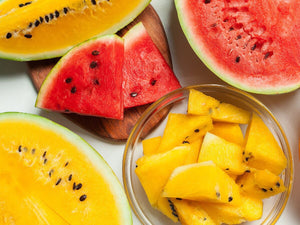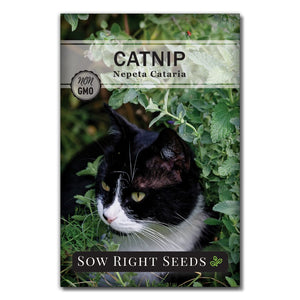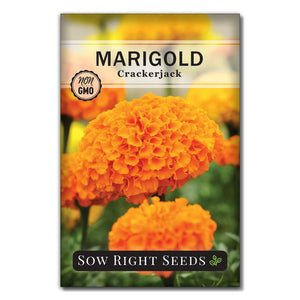5 Easy Solutions to Keep Deer Out of Your Garden
PestsIf you live in an area with lots of deer, you know how much damage they can do to your garden. Finding green nubs instead of a colorful flower bed can be infuriating. But there are some tips and tricks that will keep deer from eating your flowers and vegetables.

Methods to Keep Deer Out of the Garden
So, what’s the best way to keep deer out of the garden? Just like other gardening advice, each gardener has their tried and true methods. We’ve done a lot of research on how to keep deer out of the garden, and here are a few of our favorites:
Install Physical Barriers
A physical barrier is one of the best ways to keep deer out of the garden.
You can choose individual fencing around various plants or enclose larger areas. Remember that they can jump 8 feet high, so the taller and more inconvenient, the better for keeping deer out.
Black mesh deer netting is a good choice. Put strings or streamers on the fence so that the deer know where it is while they're learning the new lay of the land.
Stockade fencing is also a great choice because it blocks visibility. Deer don't want to jump over the fence blind. They also won't be tempted by the sight (and smell) of your lovely garden.
Double fence layers can keep deer from jumping into the garden. They'll avoid jumping the first fence if they think they'll be trapped. If you choose this method, you can erect shorter fencing (5 feet or so).
Electric fences can be useful deterrents for deer, but they also can shock humans and other animals as well. This is an option that requires some extra care. Make sure that you follow local laws and instructions carefully if you choose an electric fence.
Fishing line fences don't look like a barrier, but many gardeners swear by them. For this fencing, use a heavy fishing line such as 30lb. Tie it to stakes around the area you want to protect. It should be far enough away from the plants that they can't reach over and eat. The line should be high enough to hit them in the chest when they walk up to it. This pressure they can't see often spooks deer enough that they run away.

Grow Deer-Resistant Plants
Deer can be picky eaters that avoid plants simply based on their texture. Deer turn their noses up at many plants with fuzzy, spiny, leathery, or fibrous foliage. They also tend to avoid plants with heavy fragrances, including some of our favorite herbs. Sage, lavender, oregano, mint, and dill can overwhelm a deer’s sense of smell and discourage them from eating up your vegetables. They also prefer flowering and woody plant shoots over grasses.
Choose border plants from among these deer-resistant plants to make your garden unappealing from the outside.
Use Scare Tactics
Deer are always on the lookout for danger and are naturally skittish. Unfamiliar sounds, scents, and sights can keep them away. The key here is "unfamiliar." Once they realize that the new sounds are not threatening, you'll need to try another tactic. So you may want to have a variety of options to try.
Some scare tactics to use are noise, light, and water. Gardeners have gotten creative when rigging up motion-activated ways to scare deer away when they get too close.
A motion-activated scarecrow can trick deer into thinking that a human is hanging out in the garden.
Motion-activated sprinklers are another great choice for scaring deer away. Choose something that will work in the nighttime as well as the day.
However, the deer might get wise to these sights and sounds over time. Deer in urban and suburban settings can be especially street-wise, so you may have to step up your scare tactics.

Apply Deer Repellent
There are several ways to think about "deer repellents." Deer repellent can be things that deer don't like to smell. There are tales of gardeners using coyote urine and other things that could deter deer. Just remember, some extra smelly things might deter your neighbors more than the deer.
Some to try are hot pepper sprays, garlic, shredded bars of soap, blood meal, ammonia, and egg-based repellents. What scents to use may depend on the deer in your area.
There are also commercially available deer repellents. These topical applications will need to be applied frequently.
You can also consider companion plants to be deer-repellent. Plant strongly scented plants that deer don't like, such as lavender and mint.
Avoid Deer Favorites
It may be hard to avoid garden plants that deer love. If you’ve got a vegetable garden, you’ve probably got something delicious they’re jealous of. In addition to fruits and vegetables, deer love tulips, azaleas, pansies, hostas, and violas. If you can, save these plants for closer to the house because deer are less likely to venture too close to your home where humans are.
And, while you are at it, ditch your bird feeder, too. If you’re having a serious deer problem, this is one of the first things you can do to keep from attracting them. If you can’t bear to give up your bird feeder and favorite plants, though, take heart. There’s still plenty you can do to keep them away.
It can be a challenge to keep deer out of your garden. Hungry deer will always be looking for something to eat. And the deer pressure can be higher in early spring. As we’ve learned, even the most experienced gardener can run into deer problems. Deer love many of the same plants we do, and they’re able to jump over tall fences. They can also do a lot of damage really quickly. Luckily, humans are smarter and more resourceful than deer. You’ve got this!
Written by Teresa Chandler









Leave a comment